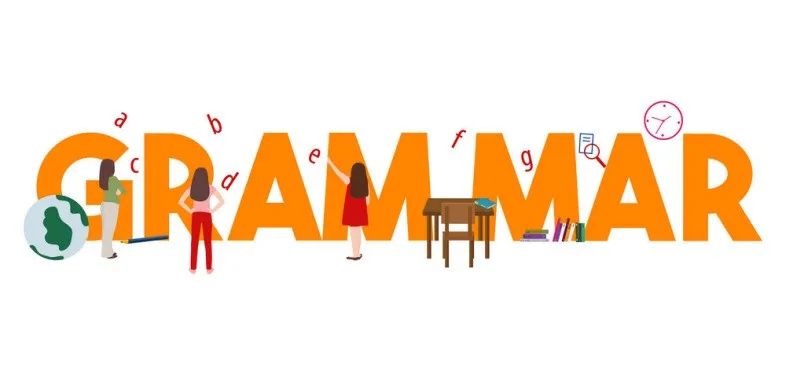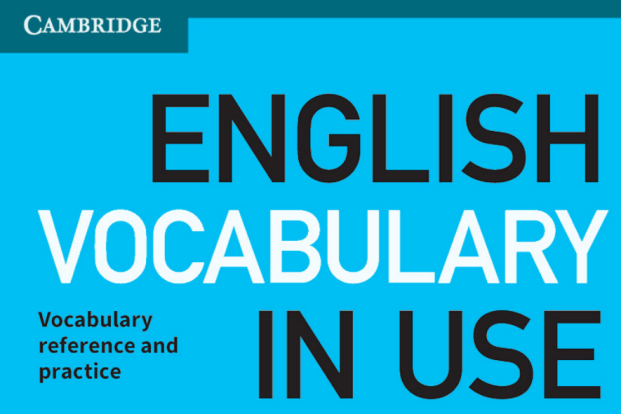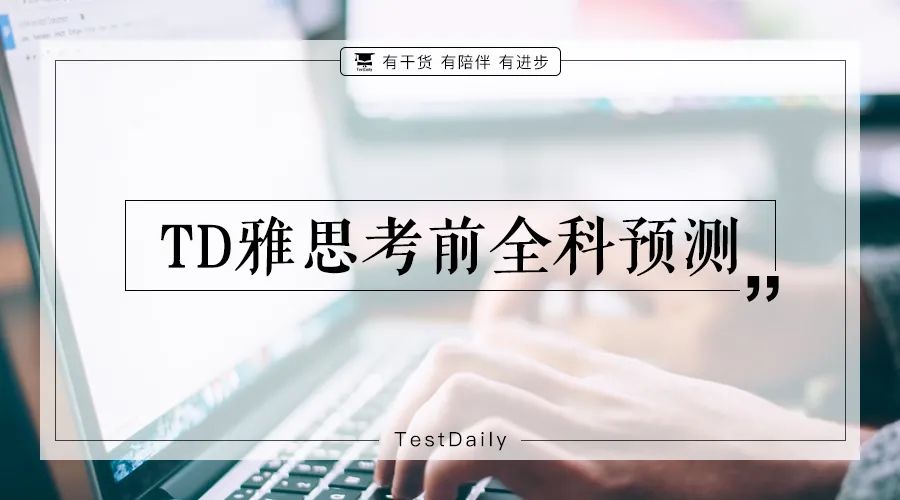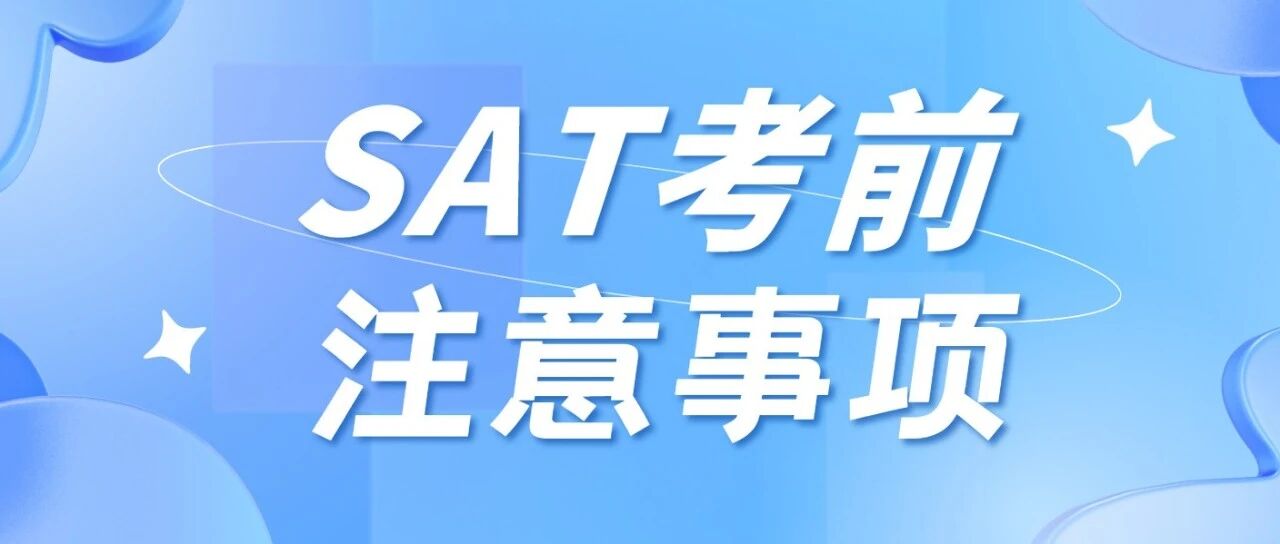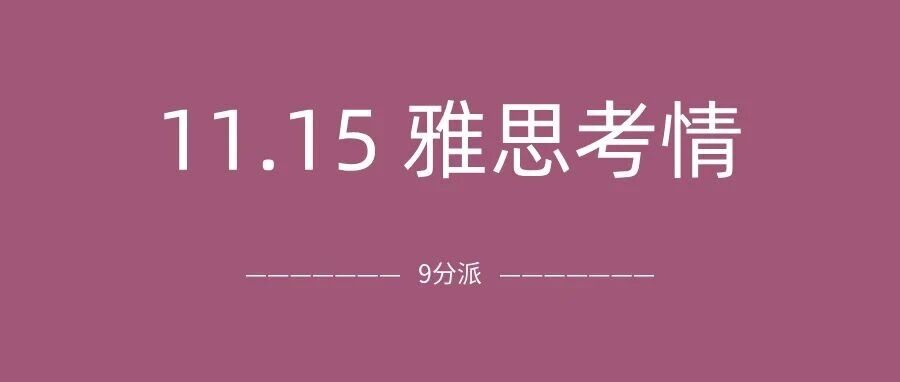 Speak, talk, say和tell都能够用来表示“说”、“讲”这一动作,那么,这四个词汇之间的区别是什么呢?各自的常用搭配又有哪些呢?快来和小厚一起看一看吧!
Speak, talk, say和tell都能够用来表示“说”、“讲”这一动作,那么,这四个词汇之间的区别是什么呢?各自的常用搭配又有哪些呢?快来和小厚一起看一看吧!
Differences between speak/talk/say/tell
Say
I say – He/She/It says – We/They say I will say – I am saying – I said – I have said 我们使用say来进行直接引用或间接引用。直接引用是指通过引号(“”)来直接准确地表达某人所说的话。间接引用指的是转述某人所说的话的大概意思。 直接引用:He said “Hello.” She said “It is a nice day.” I said “Don’t do that.”间接引用:
I said it was good. They said they wouldn’t do it again. She said she would go to town.Say的后面不可以直接使用宾语,需要再宾语前加to:

Tell
I tell – She/He/It tells – They/We tellI will tell I am telling – I told – I have told 1. Tell后面直接使用宾语:Can you tell me? You should never tell a lie. The boy told us he didn’t want any money.2. Tell somebody to do something,用来发出指令:
I told you to clean your room. He told her not to go. Did you tell him to do his homework?

Speak
I speak –She/He/It speaks –They/We speak I will speak –I am speaking –I spoke –I have spoken Speak用来表示一般的谈话(不含谈话细节),通常用于比较正式的表达,speak后面可以加宾语也可以不加宾语:I want to speak. Can I speak to you? Who are you speaking to?Speak也用来表达语言能力:
I speak English well. Do you speak Japanese? She speaks Italian. I can speak four languages.

Talk
I talk –She/He/It talks –They/We talk I will talk –I am talking –I talked –I have talked Talk和speak没有太明显的区别,只不过和speak相比,talk不那么正式。I’d like to talk with you. Shall we talk to them? Who is she talking to?
 注:另外一个表达“说”的词汇“chat”和“talk”的用法最为接近,chat相较于talk更为随意,可以与talk互相替换:
注:另外一个表达“说”的词汇“chat”和“talk”的用法最为接近,chat相较于talk更为随意,可以与talk互相替换:
Can we chat for a bit? I chatted to her yesterday. Did you chat to him?All in all,四者的主要区别为:

常用搭配
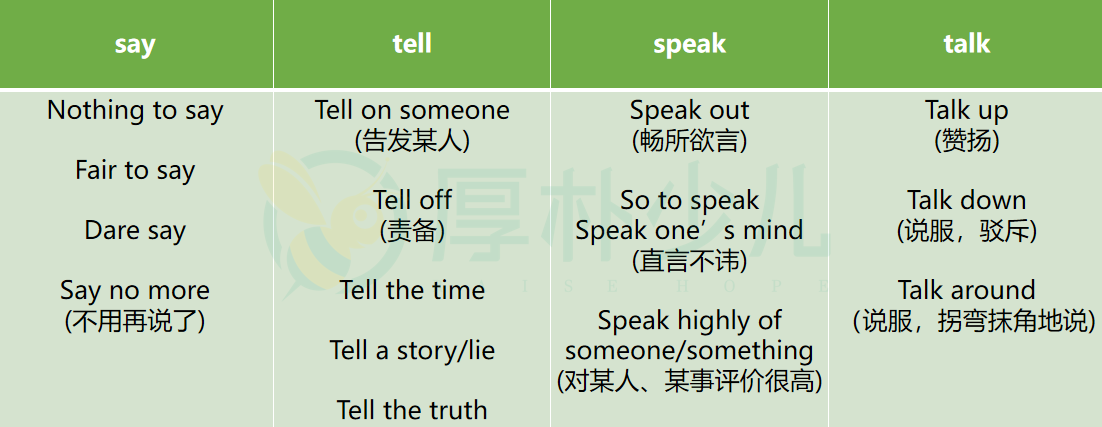 四个“说”各司其职,小朋友们在使用时要注意区分哦~
四个“说”各司其职,小朋友们在使用时要注意区分哦~
厚朴福利
获取KP备考语法资料 您只需要 扫描下方二维码 添加小马甲客服微信 发送【语法】即可获取



